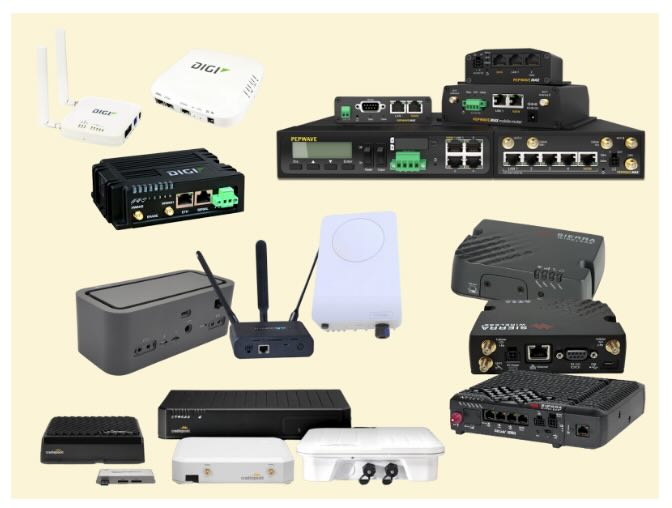



You may have heard the term “Cat” before when it comes to Ethernet cables (e.g. Cat 5, Cat 6), but what about when someone is talking about cellular? “Cat” refers to the category of a 4G LTE modem (5G does NOT use categories). 4G LTE (Long Term Evolution) is a cellular technology in which both voice and data service can operate.
Categories are used to define the performance specs of the LTE device. They range from 1 to 22 and differ with regards to the frequency band support as well as the upload and download speeds they are capable of running. For example, Cat 1 modems can download at up to 10 Mbps (megabits), while Cat 22 modems are going to receive download speeds of up to 4 Gbps (gigabits).
Cat 4 modems are widely available due to their affordability. They can be good for a single user as well as multiple users in a home, office, or travel environment. Most will come with region specific carrier support so while they are not carrier specific, they may only work with carriers within a certain region. Max download speeds increase up to 150 Mbps and upload speeds remain capped up to 50 Mbps.
|
LTE Category |
Max Download Speed |
Max Upload Speed |
|
10 Mbps |
5 Mbps |
|
|
100 Mbps |
50 Mbps |
|
|
Cat 4 |
150 Mbps |
50 Mbps |
|
300 Mbps |
50 Mbps |
|
|
300 Mbps |
100 Mbps |
|
|
600 Mbps |
75 Mbps |
|
|
600 Mbps |
100 Mbps |
|
|
800 Mbps |
226 Mbps |
|
|
1200 Mbps |
300 Mbps |
|
|
1600 Mbps |
300 Mbps |
|
|
2000 Mbps |
300 Mbps |
|
|
4000 Mbps |
450 Mbps |
cat4 speed, cat 4 speed, lte cat 4, what speed is 4g lte in mbps
LTE categories, often referred to as "Cat," define the capabilities of mobile broadband devices, including their maximum download and upload speeds. Each category represents a specific set of technical standards that devices must meet to achieve certain performance levels. Understanding these categories helps users select the right modem or device based on their connectivity needs.
For instance, a Cat 1 modem is suitable for basic applications with speeds up to 10 Mbps, while a Cat 22 modem can achieve speeds up to 4 Gbps, making it ideal for high-demand environments. This categorization allows consumers to make informed decisions when purchasing devices for personal or business use, ensuring they choose equipment that meets their specific requirements.
Cat 4 modems are designed to provide a balance between performance and affordability, making them an excellent choice for both residential and small business users. With download speeds of up to 150 Mbps and upload speeds reaching 50 Mbps, Cat 4 modems can handle multiple devices simultaneously, supporting activities such as streaming, gaming, and video conferencing without significant lag.
These modems are particularly beneficial in areas where higher categories are not available, offering reliable connectivity at a lower cost. Additionally, Cat 4 modems are compatible with a wide range of networks, making them versatile options for users looking to maintain a stable internet connection across various locations and applications.
When selecting a modem, it's crucial to understand how LTE categories compare to one another. Each category not only differs in speed but also in latency and the number of supported connections. A comparative overview enables users to visualize these differences and select a modem that aligns with their specific usage scenarios.
For example, while a Cat 4 modem may suffice for everyday browsing and streaming, a Cat 6 or higher might be necessary for businesses that require extensive data transfer and low latency. By providing a clear comparison, users can better navigate their options and invest in technology that meets their performance expectations.
Selecting the right modem involves assessing your specific needs, including the number of devices that will connect, the types of activities performed online, and the available network coverage in your area. Understanding these factors can significantly impact your internet experience, making it essential to choose a modem that fits your lifestyle or business requirements.
For instance, if you are a remote worker who frequently participates in video calls, a higher category modem would provide the necessary bandwidth and reliability. Conversely, for casual browsing and streaming, a Cat 4 modem may be sufficient. Evaluating your needs against the capabilities of different LTE categories ensures you make a well-informed choice.
